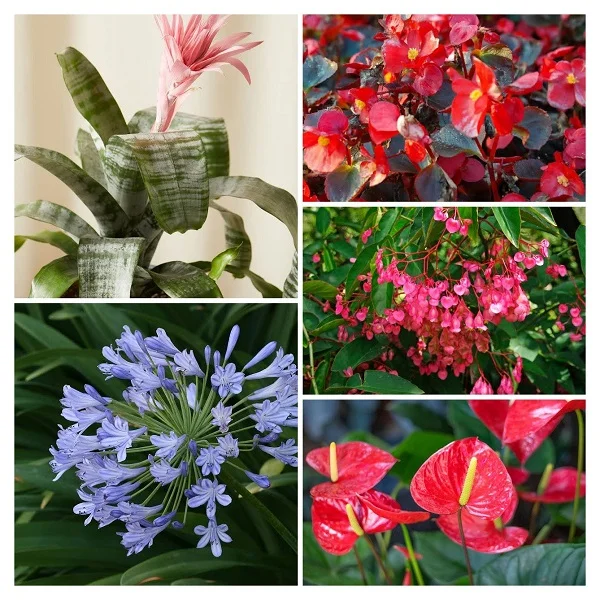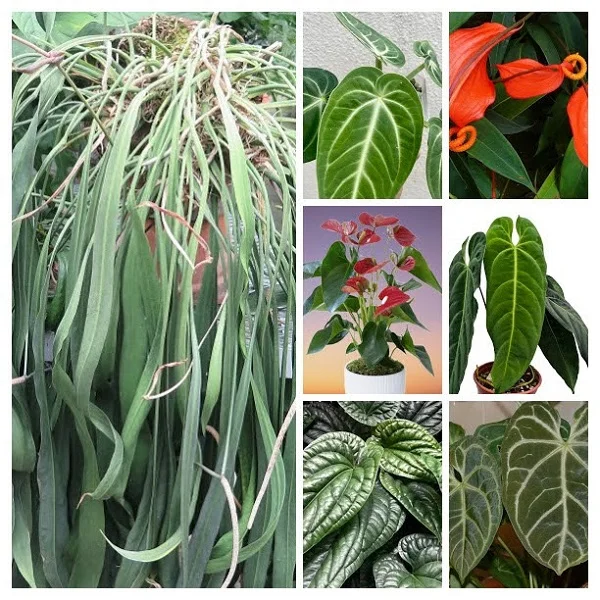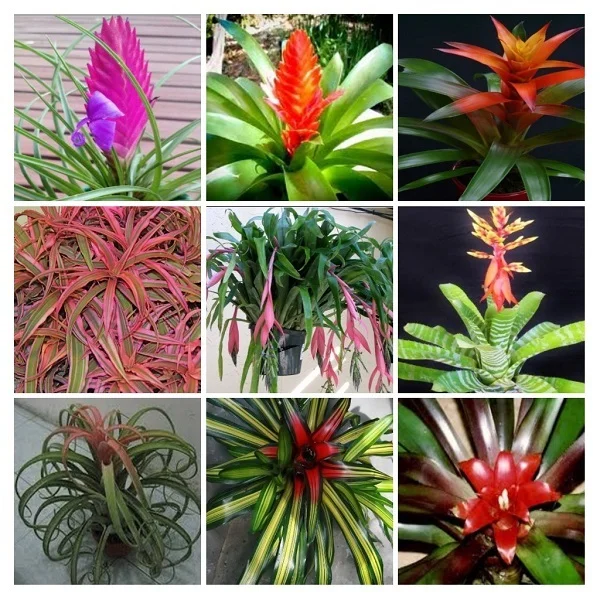13 Types of Orchids for Indoors that are Ideal for a Beginner
Some links in this post may be affiliate links
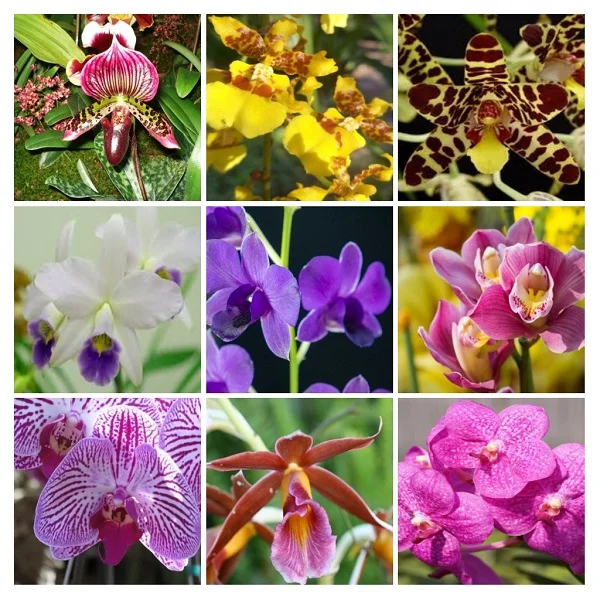
Orchids are popular flowering plants on account of their spectacular blooms. Most orchids can be grown indoors successfully if they are given the right growth essentials.
Good filtered light, warm and humid conditions, good air circulation and free-draining, loose, orchids soil are essential for blooming and for the proper growth of orchids.
Orchids also require that they be kept away from cold drafts which cause sudden changes in the temperatures resulting in reduced growth , wilting, flowerbud drop, flower drop, reduced blooming among others.
If you are looking to add orchids to your collection, we have herebelow outlined for you 13 popular Orchids that you can grow in your home even if you are beginner.
13 Orchids for Indoors Ideal for Beginners
The best 13 orchids for indoors include Boat Orchids, Cattleya Orchids, Brassavola Orchids, Moth Orchids, Lady Slippers Orchids, Vanda Orchids, Nun Orchids among others.
1. Boat Orchids (Cymbidium Orchids)
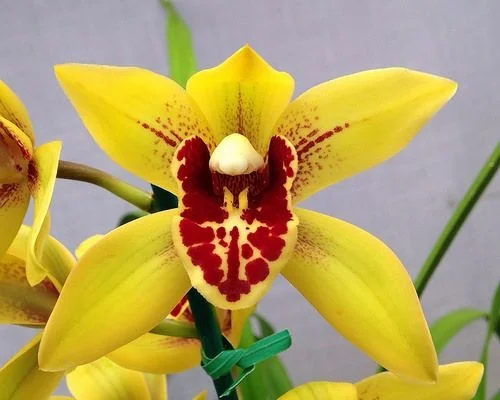
Boat Orchids are easy to grow and are regarded as the beginners orchid. They bear large, waxy, long-lasting flowers arranged on unbranched flowering stem which arises from the base of the pseudobulb.
These orchids are prolific bloomers with several flower spikes bearing up to 100 blooms per season. Some species have thin leaves but in most species the stems are modified into pseudobulbs.
Cymbidium Orchids flourish in bright indirect light of about 10 hours per day, average warmth of 15-290C, humidity of 50-60% and moderately moist, fertile, orchid potting soil coupled with fortnightly feeding during the growing season.
Learn more on how to grow and care for Boat Orchids (Cymbidium Orchids)
2. Brassavola Orchids
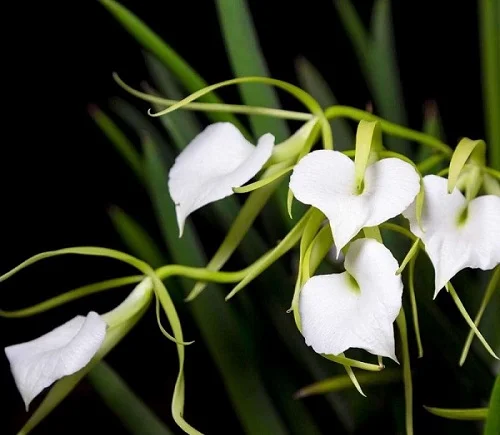
Brassavola Orchids are popular due their very fragrant flowers with a citrusy smell but are only fragrant at night. They seem to bloom the year-round but in reality they bloom several times in a year.
The pseudobulb in Brassavola Orchids is much smaller so the leaves appear to emerge from the rhizomes. The leaves are long, thin, tubular and may appear unrolled or flattened. In their natural habitat, these orchids are epiphytes which grow on the bark of trees.
Brassavola Orchids blossom in bright light with 4-6 hours of direct sunshine, average warmth of 18-290C, humidity of 60-70% and moderately moist, fertile, loose, well-drained, orchids potting soil coupled with monthly feeding during the growing season.
Read more on how to grow and care for Brassavola Orchids
3. Catts Orchids (Cattleya Orchids)
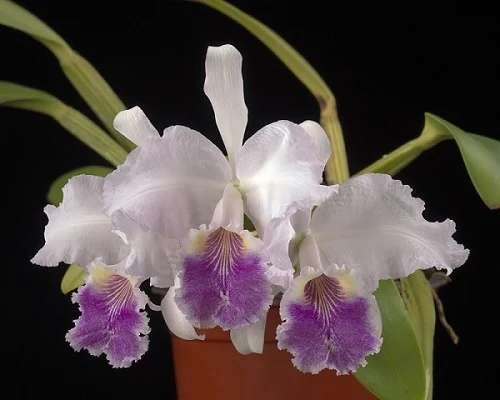
Catts also called Corsage Orchids are popular and easy to grow orchids whose large and colorful blooms in pink, white, red, purple, blue and yellow occur in clusters of 2-6 and can last for weeks.
Cattleya Orchids bear a cylindrical rhizome from which the fleshy noodle-like roots grow and the leaves grow from the top of the pseudobulb.
Cattleya Orchids require bright indirect light, average warmth of 15-290C, humidity of 50-55% and moderately moist, fertile, orchid potting soil coupled with monthly feeding during the growing season.
Learn more on how to grow and care for Cattleya Orchids (Cattleya Orchids)
4. Dancing Lady Orchids (Oncidium Orchids)
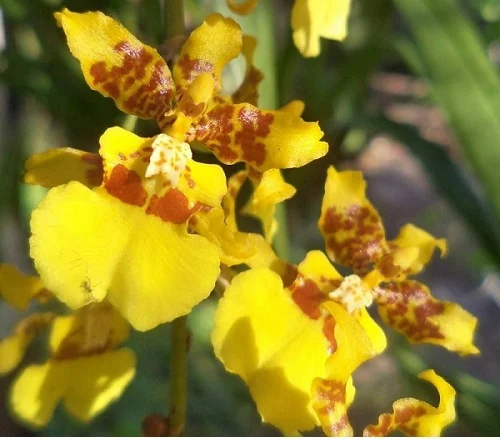
Dancing Lady Orchids also called Golden Shower Orchids or Spray Orchids are popular beginner friendly orchids which produce a profusion of small flowers with a dominant enormous lip which partially blocks the small petals and sepals.
Golden Shower Orchids are magnificent bloomers and if well cared for they can produce 6-7 branched sprays of flowers which look like a cloud of buttery butterflies which can last for weeks. The flowers are come in shades of yellow, red, white and pink.
Oncidium Orchids thrive in bright light with 4-6 hours of direct sunshine, average warmth of 15-290C, moderate humidity of 50-55% and moderately moist, fertile, well-drained, orchids potting soil coupled with fortnightly feeding during the growing season.
Learn how to grow and care for Dancing Lady Orchids (Oncidium Orchids)
5. Dendrobium Phalaenopsis Orchids

Dendrobium Phalaenopsis Orchids also called Hard Caned Dendrobium Orchids are easy-care orchids which bear large, long-lasting flowers arranged along an unbranched flowering stems.
Dendrobium Phalaenopsis Orchids are evergreen, sympodial, branching herbs with cylindrical roots arising from the base of a pseudobulb. The flowers range in color from white, green, yellow, pink, purple and often contrasting colors in the lip.
Dendrobium Phalaenopsis Orchids flourish in bright indirect light of about 10 hours per day, average warmth of 16-300C, humidity of 60-70% and moderately moist, fertile, orchids potting soil coupled with monthly feeding during the growing season.
Learn more on how to grow and care for Dendrobium Phalaenopsis Orchids
6. Lady Slipper Orchids (Paphiopedilum Orchids)
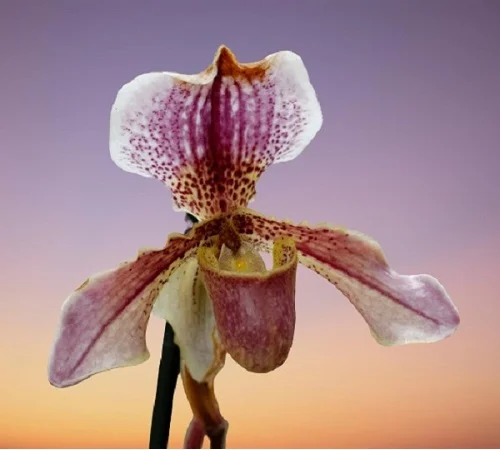
Lady Slipper Orchids also called Venus Slipper Orchids or Slipper Orchids are popular orchids due to their unusual and curious form of flowers where the pouch-like lower lip looks like lady slippers and hence the common name.
The flowers in Venus Slipper Orchids are long-lasting and can last for weeks. They range in color from soft pastels to any combination of rich, earthy tones. These orchids lack a pseudobulb and grow robust shoots, each with several leaves which are typically mottled.
Lady Slippers Orchids bloom in bright to moderate indirect light, average warmth of 15-290C, humidity of 60-80% and consistently moist, fertile, well-drained, orchid's potting soil coupled with regular feeding during the growing season.
Learn how to grow and care for Lady Slippers Orchids (Paphiopedilum Orchids)
7. Laelia Orchids
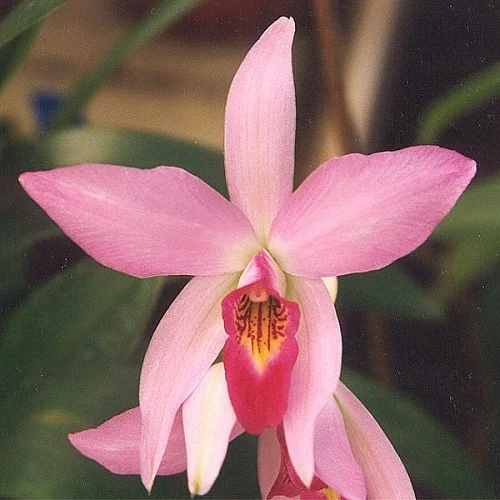
Laelia Orchids are grown for their strikingly colorful flowers comprising of petals which are of a thinner texture than the sepals but both are of similar shape but the sepals are narrower.
Laelia Orchids are compact, mostly herbaceous plants with laterally compressed pseudobulb. The blooms are long-lasting and can last for weeks. Varieties are available in pink, white, red and purple blooms.
Laelia Orchids blossom in bright indirect light of at least 10 hours per day, average warmth of 18-290C, moderate humidity of 50-55% and moderately moist, fertile, well-drained, orchids soil coupled with fortnightly feeding during the growing season.
Read more on how to grow and care for Laelia Orchids
8. Leopard Orchids (Ansellia africana)
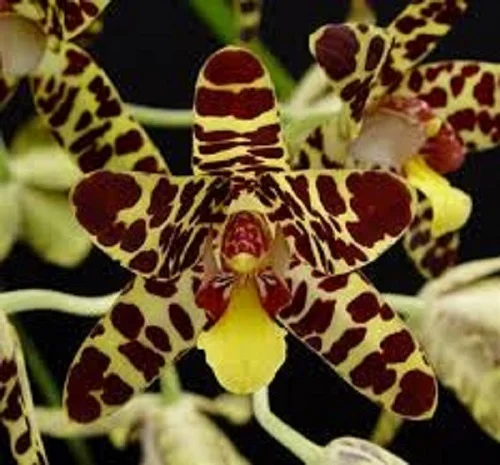
Leopard Orchids also called Trash Basket Orchids are popular orchids which bear numerous, delicately fragrant, leopard-like spotted flowers hence the common name 'leopard orchids'.
Leopard Orchids have white, needle-like aerial roots which point upwards, taking the form of a basket around a large, cane-like , yellow pseudobulb hence the common name 'trash basket'. In their natural habitat, this basket catches the decaying leaves and litter upon which the plant feeds.
Ansellia africana prosper in very bright light with 4-6 hours of direct sunshine, average warmth of 16-290C, humidity of 60-75% and moderately moist, rich, well drained, orchid potting soils coupled with fortnightly feeding during the growing season.
Learn more on how to grow and care for Leopard Orchids (Ansellia africana)
9. Moth Orchids (Phalaenopsis Orchids)

Moth Orchids also called Phals are easy-care orchids which bear long-lasting, flat-faced, often fragrant flowers arranged in a flowering stem that often branches near the end.
Phals bloom easily and the flowers open successively with each spike holding more than 20 flowers. Several of these flat-faced flowers blooming along an arching stem look like moths in flight and hence the common name, 'Moth Orchids'.
Phalaenopsis Orchids blossom in bright indirect light (filtered light), moderate warmth of 16-290C, humidity of 60-70% and moderately moist, rich, well-aerated, orchids potting soil coupled with regular feeding in the growing period.
Learn how to grow and care for Moth Orchids (Phalaenopsis Orchids)
10. Nun Orchids (Phaius Orchids)

Nun Orchids also called Swamp Orchids are beginner friendly orchids whose delicately fragrant, long-lasting flowers range in color from brown to maroon, often with a white or pink lip.
The upper sepal is curved and the petals are white on the back side resembling a nun's cap and hence the common name, 'Nun Orchids'. The blooms are produced on tall spikes each bearing a cluster of 10-20 flowers.
Phaius Orchids thrive in bright indirect light (filtered light), average warmth of 15-290C, humidity of 60-70% and moderately moist, fertile, well-drained, orchids potting soil coupled with regular feeding during the growing season.
Learn more on how to grow and care for Nun Orchids (Phaius Orchids)
11. Spider Orchids (Brassia Orchids)
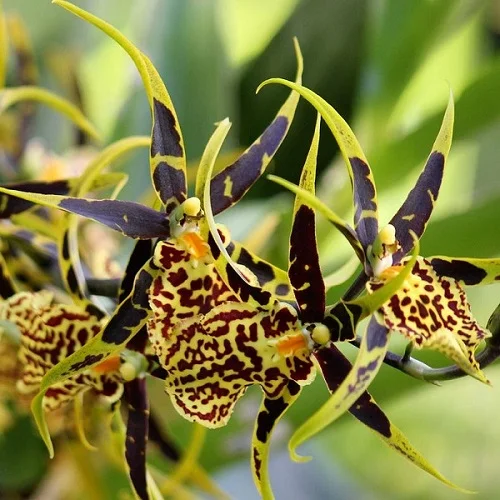
Spider Orchids are notable for their characteristic long and spreading tepals which lend them the common name 'spider orchids'.
Brassia Orchids are popular orchids due to their numerous, delicately fragrant, long-lasting blooms. The flowers can be spotted yellow, cream brownish or green. To bring these orchids to flower requires a rest period of about 6-8 weeks.
Brassia Orchids flourish in bright indirect light (filterd light), average warmth of 16-290C, humidity of 60-70% and moderately moist, rich, loose, orchid's potting mix coupled with monthly feeding in the growing season.
Learn more on how to grow and care for Spider Orchid (Brassia Orchids)s
12. Vanda Orchids

Vanda Orchids are popular due to their showy, fragrant, long-lasting and intensely colorful flowers which show a yellow-brown color with brown markings but they also appear in green, red, white, red, orange, purple, pink and burgundy shades.
The numerous flowers grow on a lateral flower spike arising from the central stem. Vanda Orchids do not have pseudobulbs but they have leathery, drought-resistant leaves. The growth occurs from a single stem and leaves are highly variable and adapted to their natural habitat.
Vanda Orchids perform best in very bright light with 4-6 hours of direct sunshine, average warmth of 21-290C, humidity of 60-70% and consistently moist, fertile, well-drained, orchids potting soil coupled with regular feeding during the growing season.
Read more on how to grow and care for Vanda Orchids
13. Zygopetalum Orchids
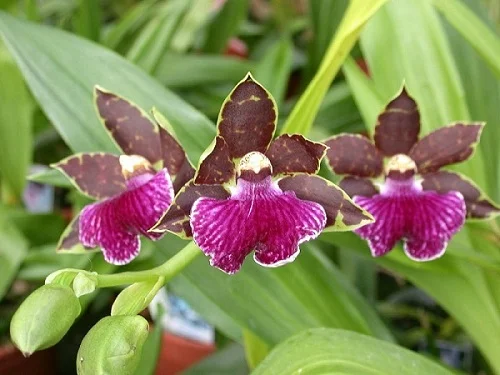
Zygopetalum Orchids are popular due to their ease of care and colorful, fragrant, waxy, long-lasting blooms which occur in multiples in shades of green, purple, burgundy and raspberry with several patterns.
The Zygopetalum Orchids blooms are held up by tall, upright stems and will fill a room with a delightful fragrance. These orchids have a robust growth form and bear large, ovoid-conical pseudobulbs which are deciduous.
Zygopetalum Orchid blooms in bright indirect light (filtered light), average warmth of 15-290C, humidity of 65-75% and consistently moist, fertile, well-drained soil coupled with regular feeding during the growing season.
Learn more on how to grow and care for Zygopetalum Orchids
You liked it? Share on social media.
Related Content
Amazon Associates Disclosure
Homeplantsguide.com is a participant in the Amazon Services LLC Associates Program, an affiliate advertising program designed to provide a means for sites to earn advertising fees by advertising and linking to amazon.com.
